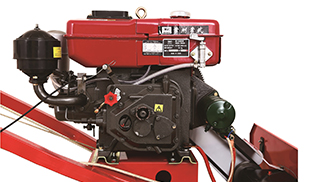Aug . 07, 2024 07:40 Back to list
Causes and Consequences of Brake Drum Malfunctions in Automotive Systems and Safety Implications
Understanding Brake Drum Failure Causes and Prevention
Brake drums play a crucial role in the braking system of many vehicles, especially those that use drum brakes, such as trucks, buses, and some cars. These components are designed to withstand substantial force and heat generated during braking. However, like any mechanical part, brake drums are susceptible to failure, which can lead to serious safety risks. Understanding the causes of brake drum failure and how to prevent it is vital for vehicle safety.
Common Causes of Brake Drum Failure
1. Overheating One of the primary reasons for brake drum failure is overheating. When brakes are applied, friction is created between the brake shoes and the drum, generating heat. If brakes are used excessively, such as during long downhill descents or in heavy traffic, they can overheat. This extreme heat can cause the brake drum to warp or crack, impairing its performance and reliability.
2. Wear and Tear Brake drums are subjected to normal wear over time. The friction material on brake shoes can wear down, leading to decreased braking efficiency and uneven wear on the drum surface. If not regularly inspected and replaced, worn brake components can result in brake drum failure.
3. Moisture and Corrosion Brake drums are often exposed to moisture, especially in regions with rainy or humid climates. This exposure can lead to rust and corrosion, weakening the structural integrity of the drum. Corrosion can cause pitting and other forms of degradation, ultimately leading to failure.
4. Improper Installation Brake drums need to be installed correctly to function properly. Misalignment during installation can place undue stress on the drum, leading to premature failure. Additionally, if the mounting hardware is not properly torqued or is of substandard quality, it can contribute to a failure.
5. Quality of Components The quality of the brake drum itself plays a significant role in its longevity. Low-quality materials can result in a shorter lifespan and a higher likelihood of failure under stress. Therefore, it is essential to choose high-quality drums that meet OEM specifications.
Signs of Potential Brake Drum Failure
brake drum failure

There are several indicators that a brake drum may be failing. Unusual noises, such as grinding or squeaking, often signal an issue with the brake system. Additionally, if a driver experiences a decrease in braking performance, it could be a sign of problems with the brake drums or other components. Vibration during braking or visible cracks or warping on the brake drum's surface should be addressed immediately.
Preventive Measures
1. Regular Inspections Regular brake system inspections can identify potential issues before they lead to failure. Mechanics can check for wear and tear on brake drums and shoes, inspect for corrosion, and ensure that all components are functioning correctly.
2. Proper Maintenance Following the manufacturer's maintenance schedule is key. This includes regularly replacing brake shoes, ensuring that the brake fluid is at the appropriate level, and making any necessary adjustments.
3. Driving Habits Drivers can also contribute to the longevity of their brake drums by being mindful of their driving habits. Avoiding excessive braking, using engine braking when feasible, and allowing brakes to cool after heavy use can all help prevent overheating.
4. Quality Parts Investing in high-quality brake components can make a significant difference in their longevity and reliability. OEM or reputable aftermarket parts are typically a better choice than cheaper, lower-quality alternatives.
Conclusion
Brake drum failure can pose serious risks to vehicle safety. Understanding the common causes of this failure and implementing preventive measures can help ensure the safety and performance of the braking system. Regular inspections, proper maintenance, and attentive driving habits are essential components of effective brake care. By taking these steps, drivers can significantly reduce the risk of brake drum failure and maintain the integrity of their vehicle's braking system.
-
Scania Brake Drums: OEM Quality for Optimal Safety & Durability
NewsAug.16,2025
-
R.V.I: Advanced Remote Visual Inspection for Precision
NewsAug.15,2025
-
Discover HYUNDA: Innovative Vehicles, Equipment & Solutions
NewsAug.14,2025
-
R.V.I: Unlock Advanced Insights & Real-time Performance
NewsAug.13,2025
-
Kamaz Brake Drum: Durable & Reliable for Heavy Duty Trucks
NewsAug.12,2025
-
Heavy Duty Iveco Brake Drum - Premium Quality & Safety
NewsAug.11,2025
